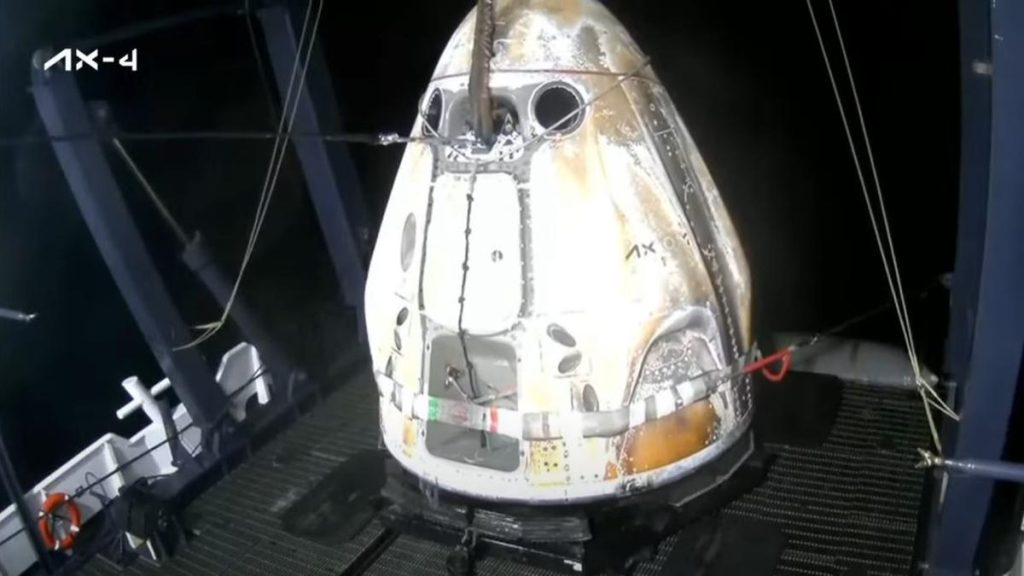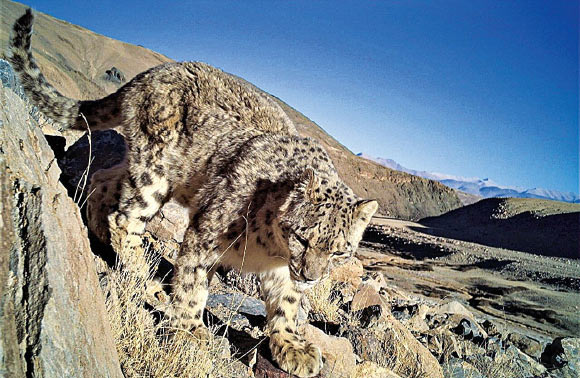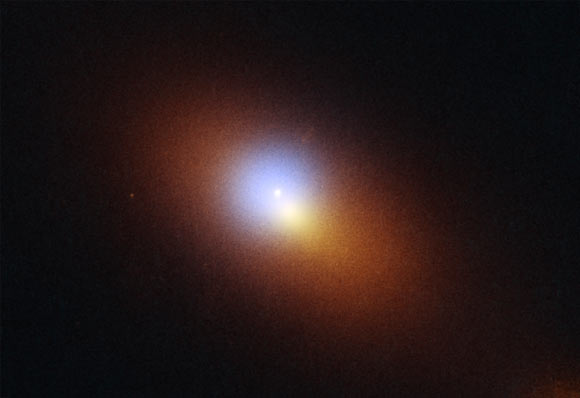Effective conservation of threatened species depends on accurate scientific assessment of their occurrence and population status. This information is often lacking or has poor scientific reliability for low-density carnivores, such as snow leopards (Panthera uncia) that inhabit remote and challenging habitats. In a new study, a team of scientists led by Union Territory of Ladakh and Wildlife Institute of India evaluated the population and distribution of snow leopards and their prey using a double sampling approach across the Trans-Himalayan Ladakh in India.
The snow leopard (Panthera uncia). Image credit: Department of Wildlife Protection, Union Territory of Ladakh.
“Large carnivores are among the most iconic species, symbolizing a thriving ecosystem and conservation optimism,” said Union Territory of Ladakh researcher Pankaj Raina and colleagues.
“Their apex position in the food chain is linked to cascading positive impacts on trophic regulation, nutrient cycling, and disease regulation.”
“And yet, large carnivores are among the widely extirpated species, leading to enduring impacts on the functioning of our modern ecosystems.”
“Among the enigmatic large carnivores, the snow leopard is a flagship species in the mountainous regions of South and Central Asia, spanning 12 countries.”
“Snow leopards are known for their elusive and large-ranging behavior, necessitating a landscape approach for population monitoring and conservation.”
In their study, the authors assessed the population size and distribution of snow leopards across a 59,000 km2 landscape in India’s Ladakh territory.
First, they performed an intensive survey of the region for evidence of snow leopards, such as footprints, feces and scratch marks.
They also assessed the presence of other large carnivores, such as brown bears and lynx, as well as wild herbivores and livestock.
Next, they set up 956 camera traps, covering over 8,500 km2 in areas occupied by snow leopards, to allow them to generate accurate estimates of their populations across the territory.
They analyzed the photos using artificial intelligence to identify individual snow leopards based on the distinctive pattern of markings on their forehead.
The researchers estimated that Ladakh is home to 477 snow leopards, representing 68% of India’s total population.
The density of snow leopards varied between 1 and 3 individuals per 100 km2, and they found that Hemis National Park has the highest density of snow leopards recorded globally.
Up to 61% of snow leopards in Ladakh co-exist alongside human populations.
Resource-rich grasslands with a moderate climate and complex terrain tended to be home to a higher number of snow leopards, which is likely due to a greater availability of prey and less human disturbance.
“The deep-rooted reverence for wildlife among Ladakh’s communities, combined with the economic benefits from snow leopard tourism and conflict management strategies, helps sustain some of the world’s highest snow leopard densities — a model that could be adapted and upscaled across the species’ range,” the scientists said.
“To photograph snow leopards’ foreheads, we had to make them pose in front of our cameras.”
“This was done by spraying a small amount of perfume just below the cameras that were deployed near their favored scent marking rocks on the high ridge tops.”
“The curious leopards lower their heads to smell the novel smell and we have our prized photos.”
“Fingerprinting snow leopards: a special pattern recognition software that fits a three dimensional model on the snow leopards forehead image extracts the spot patterns and stores them in a database for comparing it with other snow leopard photographs, and comes up with close matches.”
“This reduced our work many fold and improved the accuracy of correct individual identification that is crucial for population estimation using statistical models.”
The team’s paper was published online in the journal PLoS ONE.
_____
P. Raina et al. 2025. Comprehensive assessment of snow leopard distribution and population in the Indian Trans-Himalaya, Ladakh: Standardizing methods for evidence-based conservation. PLoS One 20 (5): e0322136; doi: 10.1371/journal.pone.0322136



























